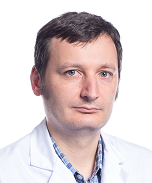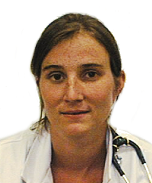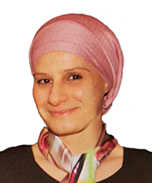Central nervous system cancer
Summary/Epidemiology
Distinction is made between the central nervous system (CNS), composed of the brain, cerebellum, and spinal cord, and the peripheral nervous system, which is made up of all the nerves that run through the body as well as the structures that surround the nervous system. Tumors of the nervous system are rare: their frequency does not exceed 40 to 60 per 100,000. The majority of them, especially those of the central nervous system, are malignant. In Belgium, this type of tumor represents less than 2% of all cancers. In children, CNS tumors are the leading cause of cancer mortality. The causes of the development of these tumors remain mostly unknown.
Risk factors
Ionizing radiation is the number one risk factor for developing cancerous tumors. The impact of waves emitted by cell phones on our brain is debated in the scientific community.
Symptoms
Four clinical signs may suggest a brain tumor: intracranial hypertension (headache, nausea, vomiting, and changes on fundus examination), epileptic manifestations, motor deficits (weakness in one part of the body), and cognitive impairment (memory impairment and confusion). However, there is no reason to panic: the vast majority of headaches, for example, have nothing to do with brain tumors. Tingling or loss of strength in one or more limbs or body parts are also signs of a peripheral nervous system tumor, but these signs can also occur in many other conditions.
Diagnosis
In addition to conventional medical imaging and microscopic analysis of tissue samples, the tool of choice for the diagnosis of CNS tumors is magnetic resonance imaging (MRI). This non-invasive technique, which has no adverse effects, provides highly accurate 2D and 3D images. Other complementary imaging techniques exist, such as the PET scan, and help to specify and plan the best surgical intervention for diagnostic and/or therapeutic purposes
Treatments
CNS cancer patients are managed by a multidisciplinary team where neurosurgeons, neuroradiologists, neuroendocrinologists, neurologists, medical oncologists, pathologists, and radiation therapists address each patient's case together to determine the most appropriate treatment for each situation.
The primary treatment for most primary brain tumors is surgical resection. More than 200 patients are operated on each year at the Cliniques Universitaires Saint-Luc for malignant and benign tumors of the nervous system. In our institution, an ultra-modern surgical complex has been developed, which will remain at the top of the world rankings for many years to come. A high field MRI room is coupled to the neurosurgery room. This makes it possible to check the quality of the surgical resection during the operation. If there is a residue, the operation is continued at the same time.
Surgical techniques have developed considerably. Neuronavigation allows for computer-assisted surgery. The neuronavigation system projects planned data into the eyepieces of the microscope that the neurosurgeon uses to operate. It is like a GPS for the surgeon. It allows to locate a lesion with great precision, to know exactly, via the computer screen, the position of the tumor and of the neurosurgeon's instruments in the brain, and thus to determine very precisely the optimal trajectory towards the chosen target. This technique is mainly used for pathologies requiring millimetric precision. The benefits of this surgical method for the patient are significant due to the precision it provides, resulting in a significant increase in the rate of macroscopically complete resection (i.e., removal of all visible tumor). Neuronavigation also allows for a better targeting of the intervention area and therefore for smaller scars and openings. The risks are therefore limited, recovery is faster, and the hospital stay is shorter.
A state-of-the-art equipment, unique in Belgium, consists of a very high field MRI room coupled to the neurosurgery room. Neuronavigation has become a common practice.
After surgical resection of the tumor, it is analyzed by a pathologist to establish a precise histological diagnosis. When the tumor is aggressive or cannot be completely removed because of its infiltration in important areas, additional treatment must be considered. Post-operative radiation therapy is therefore often indicated. Thanks to developments in imaging and computer technology, the volume to be treated as well as the areas at risk are precisely delineated, allowing the placement (in 3 dimensions) of the radiation beams in order to deliver a homogeneous dose to the tumor volume while preserving the surrounding healthy tissue. In neuro-oncology, the Hi-Art tomotherapy irradiation technique is mainly used to treat skull base tumors. This device allows on the one hand an even more targeted irradiation and on the other hand a very high precision of treatment. Only a few centers, including ours, have this device in Belgium.
The advent of new chemotherapeutic agents that are effective in the treatment of brain tumors has radically changed the treatment of these cancers. These chemotherapies can be administered concurrently with radiotherapy in the treatment of certain tumors or as an adjunct to it. They increase the survival of patients but also their quality of life.
Another revolution in the treatment of malignant brain tumors is the emergence of targeted therapies. Some drugs specifically destroy tumor cells by interacting with receptors expressed on tumor cells or their ligands (anti-EGF). Other molecules specifically target the vessels that feed the tumors (anti-VEGF).
Another axis of development is the identification of genetic signatures as prognostic and predictive factors of the response to chemotherapy (MGMT methylation, chromosomal loss: 1p19q).
Research / Innovation
Research in neuro-oncology is expanding rapidly. The main research themes are the development of new imaging techniques to better define the tumor, its level of aggressiveness, and its vascularization (perfusion imaging), as well as functional imaging techniques such as DTI (data tensor imaging), which is an MRI technique that allows the reconstruction of white matter bundles near the tumor. This information is valuable and helps the neurosurgeon to plan the surgical procedure in order to avoid or minimize the risk of postoperative deficits.
A second research theme is the exploitation of new pharmacological agents in the fight against aggressive CNS tumors. At present, the understanding of the mechanisms of brain tumor development is the subject of several international studies. A better understanding of these mechanisms opens the way for targeted therapies to subpopulations of tumors. Several molecules are currently being studied.
Finally, our group is interested in new technologies to improve the surgical strategy and the quality of the surgical procedure.
Contact
For any further information, or if you would like to make an appointment, please contact the Oncology Care Coordinator at + 32 2 764 42 18.
Doctor

Dr Orsalia ALEXOPOULOU

Pr Jean-Francois BAURAIN

Pr Antonella BOSCHI

Dr Florin CIOBANU
Dr Maëlle COUTEL

Dr Lina DAOUD

Pr Maëlle de VILLE de GOYET
Dr Maxime DELAVALLEE

Dr Dario DI PERRI

Pr Thierry DUPREZ

Pr Susana FERRAO SANTOS

Dr Patrice FINET

Pr Edward FOMEKONG
Dr Raluca FURNICA

Dr Vincent JORIS

Dr Guus KOERTS

Dr Tévi Morel LAWSON
Dr Manon LE ROUX

Pr Renaud LHOMMEL
Pr Marie-Cécile NASSOGNE
Dr Dorota TASSIGNY

Pr An VAN DAMME

Dr Vincent VANTHUYNE

Dr Nicolas WHENHAM
Paramedical

Marie-Laure CASTELLA

Samira Chellouki

Catherine DENOEL

